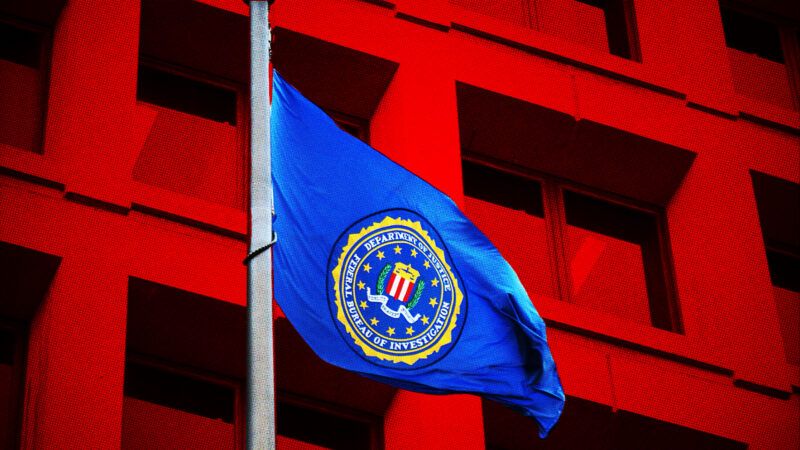A New FBI Building Would Cost Billions. Do We Even Need One?
Congress' end-of-the-year omnibus bill was delayed by arguments over where to build the new facility.

Early Tuesday morning, the Senate finally released its omnibus spending bill, which would fund the government through September of next year. The deadline to pass the bill actually passed on Friday, requiring a one-week stopgap bill to avoid a government shutdown.
Part of the delay stemmed from disagreements over where to build a new location for the FBI's headquarters. But at a time of record debt and continuing trillion-dollar deficits, it's worth asking whether the bureau even needs a new building.
The FBI has operated out of its current location, the J. Edgar Hoover FBI Building in downtown Washington, D.C., since 1975. The 2.8 million-square-foot Brutalist structure was budgeted at $60 million but ended up costing more than twice that, at $126 million ($689 million in 2022 dollars). The building was named after longtime FBI Director Hoover in 1972, days after his death and years before construction was completed.
In 2011, the Government Accountability Office (GAO) released a damning report on the building's long-term viability. The Hoover building is "aging and inefficient," the report found, and "does not meet the FBI's long-term security requirements." In 2015, agents complained to The Washington Post about cracked concrete and a crumbling parking structure.
The GAO report presented three plausible solutions: repair and refurbish the current building; demolish the current building and build a new one in its place; or build an entirely new facility somewhere else. It estimated each option could cost as much as $1 billion or more.
This year, the General Services Administration (GSA) announced that it would soon select from three different D.C.-area sites, two in Maryland and one in Virginia, on which to build a new facility. In negotiations over the omnibus spending bill, Rep. Steny Hoyer (D–Md.) and Sen. Chris Van Hollen (D–Md.) fought to insert language more favorable to putting a new facility in Maryland, while Democratic Sens. Tim Kaine and Mark Warner, each of Virginia, wanted to keep language that would have favored their state.
In the released draft of the bill, the two sides compromised: The GSA will "conduct separate and detailed consultations with individuals representing the sites" in order to "consider perspectives related to mission requirements, sustainable siting and equity." The bill would apportion $375 million toward the project.
Before spending $1 billion or more, though, it's worth noting that there are other options besides a brand-new, state-of-the-art facility.
In 2018, under President Donald Trump, the GSA indicated a preference to keep the FBI at its current location, demolishing and rebuilding on the same spot. Democrats accused Trump, who operated the nearby Trump International Hotel at the time, of simply wanting to deny the real estate to a potential competitor.
But the Trump-era GSA plan went further than just a tear-down-and-rebuild: In a presentation to Congress, it proposed not only constructing a new building but relocating 2,300 people, around one-fifth of the on-site staff, to facilities in Alabama, Idaho, and West Virginia.
One thing we learned from the COVID-19 pandemic is that plenty of jobs can be done remotely. Granted, some FBI staff deal with sensitive information that can require specialized facilities, so it's not a perfect candidate for a shift to work-from-home, but there are already more FBI field offices than there are U.S. states, so the infrastructure exists for operating remotely.
In fact, nearly half of the current "on-site" staff doesn't even work in the Hoover Building. Due to space limitations, more than 4,500 of the 10,000-plus D.C. staff work in over a dozen off-site "annex" spaces, which the FBI leases. Why are there so many more agents than the building can accommodate?
As the 2011 GAO report explained, "When the FBI first occupied the Hoover Building, it was primarily a law enforcement organization. Since then, its mission has grown in response to evolving threats and now includes counterterrorism, counterintelligence, weapons of mass destruction deterrence, and cyber security." And for nearly 70 years before that, the bureau operated entirely within the Department of Justice building. The growth of the federal law enforcement apparatus brought the growth of the federal work force, and now there's not enough space for them all.
It's not unreasonable to make the case that the FBI has a proper role to play; originally, it mostly policed interstate crimes, like banking fraud or forced labor. But when it has the bandwidth to, for example, coordinate with Twitter to request moderation for joke tweets, then clearly there is fat to trim.
The bureau could keep a central force in the capital but otherwise embrace remote work, transitioning a percentage of staff to locations outside the Beltway. Then it could make do in a more modest facility and let 6.66 acres of downtown real estate go to the highest private-sector bidder.


Show Comments (43)